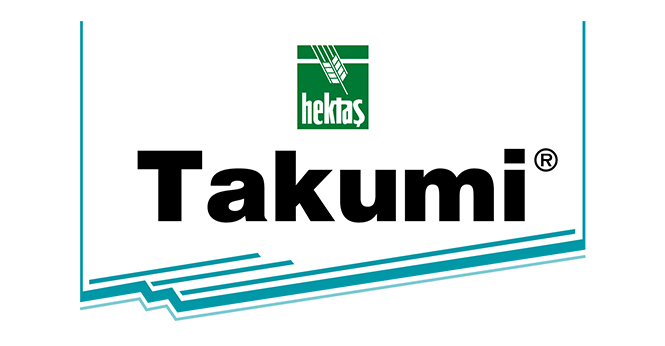
TAKUMI®
Active Ingredient: 20% Flubendiamide
Formulation : WG (Water-dispersible granule)
Packaging : 60 ml, 300 ml
Specifications
TAKUMI® is a new insecticide from the group of phthalic acid diamide which contains Flubendiamide and has a different impact mechanism. TAKUMI® binds to ryanodine receptors (RyR) in the insect’s muscular system, causing the receptor channels to remain open for a long time and uncontrolled contractions in the muscles occur as a result of the uncontrollable emergence of the Ca + 2 ions inside. Feeding of insects stops quickly and numbness, muscle paralysis and death occur, respectively. TAKUMI® has an excellent effect against many types of lepidoptera that have resistant to pesticides with its new mechanism of action. TAKUMI® is not affected by precipitation 2-3 hours after spraying. There will be no need to repeat spraying.
Method Of Application
Tomato moth: Sexual pheromone traps are used in the field (1-2 traps/ha) and greenhouse (1 trap/greenhouse) as of the start of production season in order to determine emergence of mature. The traps are checked once in a week. When the first mature is observed on the trap, at least 100 plants are inspected depending on the size of production area, and eggs and larvae are sought in the flowers, leaves, stems and shoots of the plant. If 3 of 100 plants are contaminated, management is decided. The plants are inspected again 5-6 days after spraying. Spraying can be repeated if required.
In grapevine moth management, sprayings are done according to a forecast and warning system. If the number of moths caught in traps has reached peak and started to fall; accumulated degree-days reach 120 degree-days in the first generation, 520 degree-days in the second generation and 1047 degree-days in the third generation; and if, from a phenological perspective, first generation corresponds to the flower bud stage, second generation to unripe grape and third generation to start of sweetening; eggs are checked and spraying is decided according to hatching. One spraying is done for each generation.
Codling moth of apple: The spraying is made according to forecast and warning system. The aim in the management of codling moth is to keep the trees medicated during the larvae emergence of each progeny and to kill the larvae coming from egg before entering into fruit. It is very important to determine emergence of the first larvae for determination of the first spraying times of the progenies in a healthy way. By considering these dates, 2 spraying for the first progeny, 1 for the second progeny and 1 for the third progeny if observed, are made.
Cotton bollworm: : It can be used against any progeny of cotton bollworm. In order to obtain the best impact, It is suitable for administering spraying during the period when the newly hatched larvae are in majority in each progeny. Since larvae generally feed within rake, flower and cocoon during the day, spraying should be made on early morning or late evening.
Cotton leafworm of tomato: Management of pests is necessary when 1-2 newly opened egg packages or 4-5 larvae are observed in 100 plants. Since the result will be better when spraying is made before the larvae are not dispersed, care should be taken for time of spraying.
Compatibility: TAKUMI can be mixed with products containing triadimenol, imidacloprid and copper.
Detailed Table Information
| Plant Name | Pest Name | Usage dose | Time between last spraying and harvest |
|---|---|---|---|
| Cotton | Cotton bollworm(Helicoverpa armigera) | 30 g / da, larva | 21 days |
| Apple | Codling moth (Cydia pomonella) | 20 g / 100 l water, larva | 14 days |
| Tomato (greenhouse) | Cotton leafworm (Spodoptera littoralis) | 20 g / 100 l water, larva | 1 days |
| Tomato (greenhouse) | Tomato moth (Tuta absoluta) | 15 g / 100 l water, larva | 1 days |
| Vineyard | Vine moth (Lobesia botrana) | 30 g / 100 l water, larva | Grape: 14 Days, Vineyard: 7 Days |
